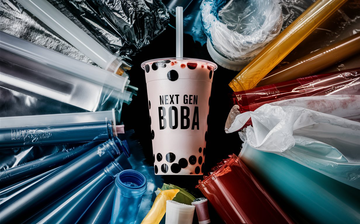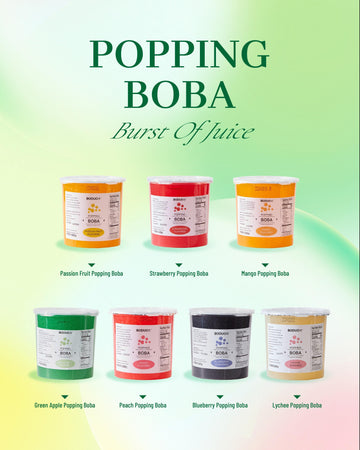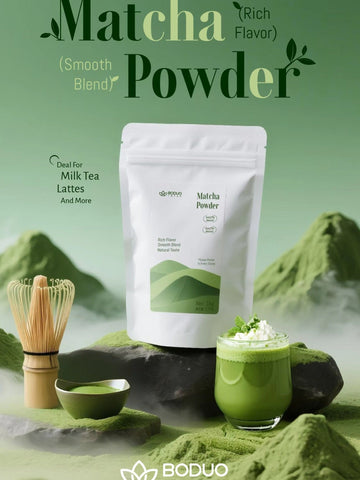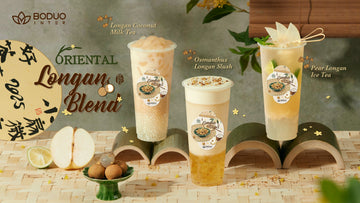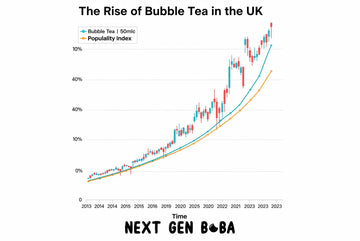Bubble tea, the delightful Taiwanese beverage enjoyed worldwide, comes with a crucial but often overlooked element: its plastic packaging. From the vibrant cups to the heat-sealed films, understanding the types of plastic used is vital for both environmental awareness and optimal bubble tea enjoyment. Today, we embark on a journey to demystify the world of bubble tea plastics, focusing on the two most common contenders: Polypropylene (PP) and Polyethylene Terephthalate (PET).
Polypropylene (PP): The Sturdy Stronghold
PP reigns supreme for bubble tea cups. Renowned for its exceptional strength, PP cups can withstand the rigors of holding piping hot or icy cold bubble tea without warping or leaching harmful chemicals. Additionally, PP boasts excellent clarity, allowing you to fully appreciate the vibrant colors and layered textures of your favorite bubble tea creation.
Polyethylene Terephthalate (PET): The Versatile Transformer
PET, a highly versatile plastic, is most commonly encountered in bubble tea sealing films. Its impermeability ensures your drink remains perfectly sealed, preventing spills and maintaining optimal temperature. Furthermore, PET offers exceptional transparency, allowing you to monitor the condensation forming on the film, an indicator of a perfectly chilled bubble tea.
The Mismatched Marriage: Why PP and PET Don't Always Mingle
While both PP and PET excel in their respective roles, using them together for sealing films and cups can be problematic. Here's why:
-
Melting Point Discrepancy: PP boasts a higher melting point compared to PET. This disparity becomes crucial during the sealing process, where heat is applied to create a secure bond. Uneven melting points can lead to imperfect seals, potentially compromising the integrity of the cup and leading to spills.
-
Adhesion Issues: PP and PET have different chemical compositions, impacting their ability to adhere effectively to one another. A weak seal can create an unhygienic environment for your bubble tea, potentially allowing air and contaminants to enter.
The Ideal Pairing: Matching Materials for Optimal Performance
To ensure a flawless bubble tea experience, both cups and sealing films should be constructed from the same plastic type. Look for reputable bubble tea vendors who prioritize quality and utilize:
- PP cups with PP sealing films: This combination provides exceptional strength, clarity, and a secure seal, ideal for both hot and cold bubble tea.
- PET cups with PET sealing films: While less common, this pairing offers excellent clarity and functionality for specific types of bubble tea, like iced varieties.
- Mismatched combinations (not recommended): Due to differing melting points and adhesion properties between PP and PET, using either PP cups with PET sealing films or PET cups with PP sealing films can lead to imperfect seals. This can compromise the integrity of the cup and potentially cause spills or leaks. If you encounter this combination, it's best to be cautious and avoid applying excessive force or heat to the cup.
- PP film will ideally stick to PP cups: This is true for optimal performance. Both materials have similar melting points and chemical compositions, leading to strong and secure seals.
- PET-ES film can stick to various cups, including most PLA cups: This is also true. PET-ES film is designed for versatility, offering good adhesion to different materials like PP, PET, paper, and even some PLA variations.
However, there's a caveat:
- While PET-ES film might adhere to PP cups, it might not be the best option. The slight difference in melting point and material properties between PET-ES and PP could still lead to less than ideal seals compared to using a matching PP film.
Here's a breakdown for clarity:
- Best practice: Use PP film with PP cups and PET-ES film with compatible cups like PET or PLA (depending on the specific PLA type). This ensures optimal seal strength and functionality.
- Technically possible, but not ideal: Use PET-ES film with PP cups. There might be some adhesion, but the seal strength could be compromised compared to a matching PP film.
Beyond the Bubble: Eco-Conscious Considerations
As we delve deeper into the world of bubble tea, embracing sustainability becomes increasingly important. Here are some ways to minimize plastic usage:
- Reusable cups: Invest in a reusable bubble tea cup, a fantastic option for frequent enthusiasts.
- Bring-your-own cup: Some shops offer discounts for those who bring their own reusable cups, promoting eco-friendly practices.
- Support sustainable vendors: Look for shops committed to using recyclable or compostable plastics, a step towards a greener future.
By understanding the science behind bubble tea plastics and making informed choices, we can elevate our bubble tea experience while remaining mindful of the environment. So, the next time you crave a refreshing bubble tea, take a moment to appreciate the science behind the cup and film, ensuring a delicious and guilt-free indulgence.

